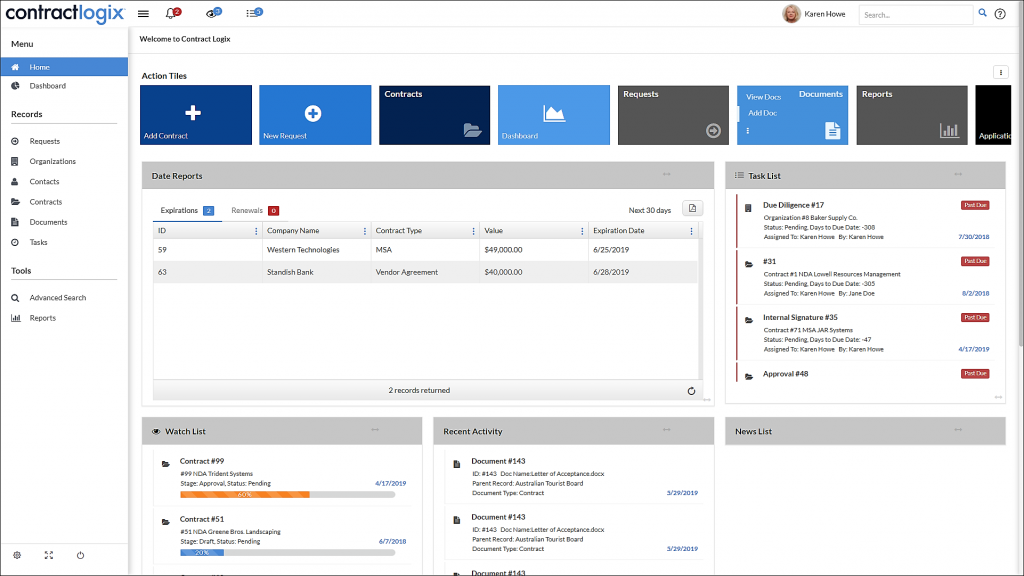How to Audit Contract Management Process in 6 Steps
A mature and efficient contract management process is vital to maintaining performance across your business. Small inefficiencies can have exponential effects, especially when the business wants to grow and scale operations. For companies that need to squeeze every bit of value from their business, the question of how to audit contract management processes becomes a vital concern.
According to McKinsey and Company, poor contracting could cost a company 9% in annual revenues. Another report shows that integrated project delivery and collaborative contracting practices lead to a 15 – 20% performance increase in cost and schedule performance.
Somewhere between these two extremes, organizations can find ways to unlock opportunities and measure performance accurately by auditing their contract lifecycle management (CLM) efforts. Let’s review how to audit your contract management processes to uncover hidden value and continue to optimize CLM in your business.
Key Takeaways:
- A healthy contract management process ensures a healthy business
- Auditing your contract management lifecycle process can help uncover hidden costs and opportunities for growth
- Regular audits should look for process deficiencies, compliance and risk issues, and your CLM’s history
- Contract management software will help you implement corrective actions quickly while providing the ability to streamline and automate your CLM processes so that they perform better
How to Audit Contract Management Processes in Your CLM
Frequent audits of your contract management efforts start with identifying the key stages in your process and establishing benchmarks for future measurement. For each stage, you’ll want a set of criteria that helps track performance across the different stages of the lifecycle of each contract.
If you opt to use contract management software, you can leverage powerful analytics and key performance indicators (KPIs) to measure your processes for continuous improvement. You can also automate many aspects of your process such as routing of approvals and tracking of obligations using automated workflows and alerts. Below, we discuss six main steps to audit your CLM.

1. Review Your Contract Accessibility
Contract accessibility is easier to manage and maintain when using a centralized CLM solution for all your contracts and data. It gives you a single source of truth for all of your contract-related processes and information. Companies that still use spreadsheets and email to manage contracts may struggle to comply with different regulations, like HIPAA, SOC 2, and FISMA.
Failure to comply with data security and privacy laws is one of the biggest risks in organizations. With contract management software, you store all your contacts in a central repository and grant access to your resources depending on their roles and responsibilities.
Once you can secure access to your contracts and related documents, your teams will spend less time looking for vital information. Centralizing the contract repository gives your teams control over their work and makes it easier to demonstrate compliance with information security best practices. In addition, using a data-centric repository like Contract Logix lets you easily view and search your contracts for important information.
2. Evaluate Clauses and Templates for Business Risks
Contract drafting is quicker and more compliant using standardized document templates and clauses contained in a library, but if you don’t review these items regularly, it may expose you to both financial and compliance risks.
To evaluate your clauses and templates, ask the following questions:
- Are accurately you capturing all required information in your contracts?
- Are your current clauses and templates up-to-date with the latest information, regulatory requirements, and easy-to-use?
- Have you standardized your templates and clauses to streamline your CLM processes?
Answering no to any of these questions may require you to review your entire template and clause library and update any outdated information.
3. Use Previous Compliance Audits to Review Your Current CLM Process
Most organizations will have historic data about past audits that you can leverage for an improved CLM process. If you’ve passed a compliance audit in the past, you may still have findings that arose from the process. Compliance issues can harm your relationship with vendors, suppliers, and customers. Create a list of past findings and then audit your current system against these items.
You’ll need to verify that:
- You are storing and managing sensitive information securely
- All contract line items are being tracked effectively
- You’ve fulfilled all contract obligations
- Any certificates or registrations haven’t expired without you being notified
Include these checks in your regular audit to mitigate the risks that could arise from non-compliance.
4. Build Real-Time Insights into the CLM Process
Harnessing the data from your contract management software enables you to build real-time insights into your CLM performance. In fact, data-driven CLM software solutions like Contract Logix allow you to benchmark and track KPIs, create and share custom reports, and leverage graphical dashboards to deliver the business actionable and real-time insights about the performance of your contracts and CLM process.
Some of the data you can collect and display include:
- Days for the entire contract lifecycle
- Days between different lifecycle stages
- Total contracts currently in the lifecycle
- Deadlines for any key tasks and contract milestones
- Number of contracts executed using e-signatures
A CLM solution will give you powerful analytics to keep track of your company’s business-critical tasks and identify process bottlenecks that need to be addressed.
5. Reconsider the Alignment between Your Teams and Technologies
Team collaboration is essential for a streamlined CLM process requiring input and participation from different departments. In some cases you may require information to flow not only between team members but also between systems, including your CLM, ERP, and CRM solutions. In these cases, some solutions such as Contract Logix offer an API to integrate your contract management software with other business applications.
Ask your team members if these processes are aligned across the entire business and technology landscape. Also, ask them where they think you can improve collaboration capabilities.
Once you know where their pain points are, you can:
- Build integrations between information systems to make the drafting process easier
- Design workflows that guide resources through the different processes
- Manage contract reviews internally and with third-parties using collaboration tools such as Contract Logix’s Collaboration Room that capture all edits and history and make negotiation fast and frictionless
- Set up alerts and notifications to ensure teams don’t miss any key dates or milestones

6. Benchmark All Performance Indicators and Review Frequently
Finally, after establishing your different KPIs for your CLM process performance, establish baselines and review your performance against these criteria in the future. Schedule audits and create reports that help team members continuously improve each stage in your CLM process and avoid future risks.
Your dashboards and reports should answer questions like:
- What are my upcoming renewals and expirations and are any at risk?
- Where are all the contracts in my process by stage and status?
- What are all my contracts by internal organization, vendor, customer, type, and value?
You can keep all your teams working together and ensure a smooth, frictionless contract management process by answering these questions using dashboards and custom reports.
Streamline and Automate Your CLM Audits with Contract Logix
A complete CLM software system can help uncover hidden costs, mitigate risks, finalize business faster, improve your team’s performance, and ensure compliance with regulatory and internal business requirements. Contract Logix provides a secure, intelligent, and data-centric contract management software solution that enables you to make better business decisions while reducing the need for manual effort from resources and reducing human error.
Now that you know how to audit your contract management processes, see how Contract Logix can assist by requesting a demo today.


